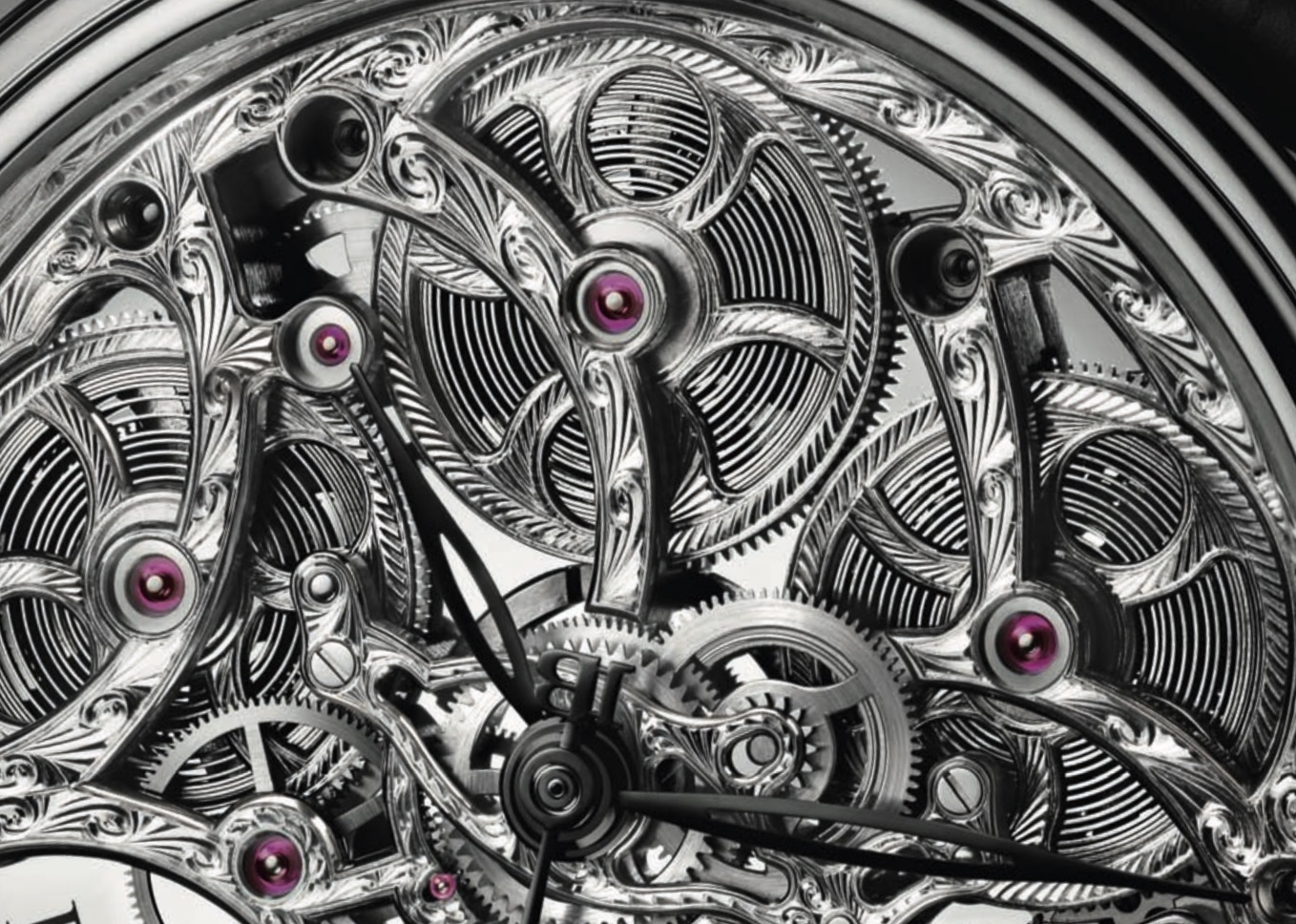The Reason
An eight-day power reserve, triple barrel, manual wound, skeletonized, hand engraved, decorated and assembled movement.
Case material 18ct white gold Case thickness 9.08mm Case diameter 38.00mm Water resistance 3.00 bar (approximately 30 meters) Sapphire crystals front and back with anti-reflective coating.
The design elements that define Villeret since 1982: round case, double stepped rounded bezel, slim profile.
The model was launched in 2012
The back of the watch with the case back removed. The movement is held directly into the case centre, accentuating the design aspect of the skeleton movement, reducing the casing thickness from the outside of the movement to the outside of the case.
Compression bezel, recto-verso.
Calibre 1333SQ
Calibre thickness 4.20mm Calibre diameter 30.60mm Power reserve 192 hours Jewels 30 Components 157 Frequency 4 Hz / 28'800 A/h
The hands are light in their design not to obstruct the decorative aspects of the calibre, coloured black to maintain readability of the time. This watch is an artisanal piece heavily worked by hand and without chapter ring or dial, to emphasise the calibre.
The inclined calibre outside of the case. The angling is finished by hand as with the engraving.
Although there is no power reserve hand indicating the extended power duration, the amount the watch has been wound can be viewed approximately through the skeletonized barrels.
Image from Lettres du Brassus
The balance wheel is made from titanium with gold regulation screws. The balance spring has a hand raised Breguet over-coil and is free sprung. Not all of the Blancpain calibres that share this base calibre in different executions with different functions have this balance wheel or spring. The nature of this watch is linked strongly with the artisanal approach of the skeletonisation, engraving and hand angling/finishing. Subsequently to aline with this goal the overcoil was added, adjusting the overall design of the balance cock to allow for the added space required. The use of the black coloured titanium balance then matches the overall binary colour approach without adding a distracting gold coloured element to the calibre. This, allows for the jewels to have a stronger aesthetic presence.
The reason for the titanium balance wheel: the inertia of the balance wheel is determined by the power supplied to the escapement, the frequency, the power reserve as well as the quality factor. While maintaining an appropriate design, adapting the geometry and/or material of the balance wheel is the only means of achieving the desired inertia. In seeking to reduce the inertia for a given shape, one may notably opt for another material, such as switching from glucydur to titanium.
The mainplate assembled with the balance assembly removed.
The pallet cock and pallets removed.
Continuing to dismantle the movement.
The setting mechanism
The dismantled movement.
Recto-verso of the assembled, empty case. The brand name printed on the inside of the front sapphire.
Summary
Skeleton watches have been around for several hundred years and have always been an exponent of revealing the usually hidden mechanics of watchmaking. The same logic is shown here with added degree of detail granted by specific elements such as the balance spring into a Breguet over-coil, to adhere to classical watchmaking, while injecting modern materials and colour treatments such as found on the balance wheel. Technically and aesthetically this skeleton is one of the most elegant examples manufactured today.
The exploded calibre.
To learn more about the Villeret Skeleton please click on the Lettres du Brassus and view edition 11.
To learn more about Blancpain

























